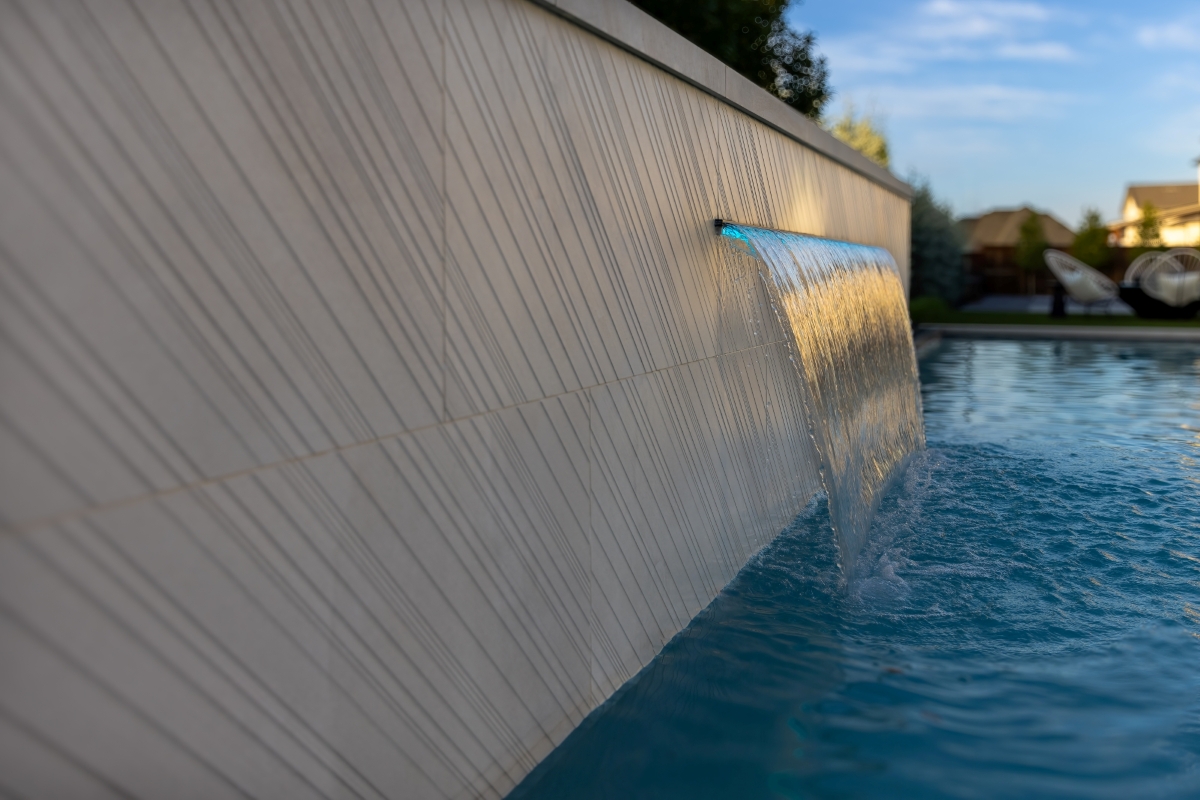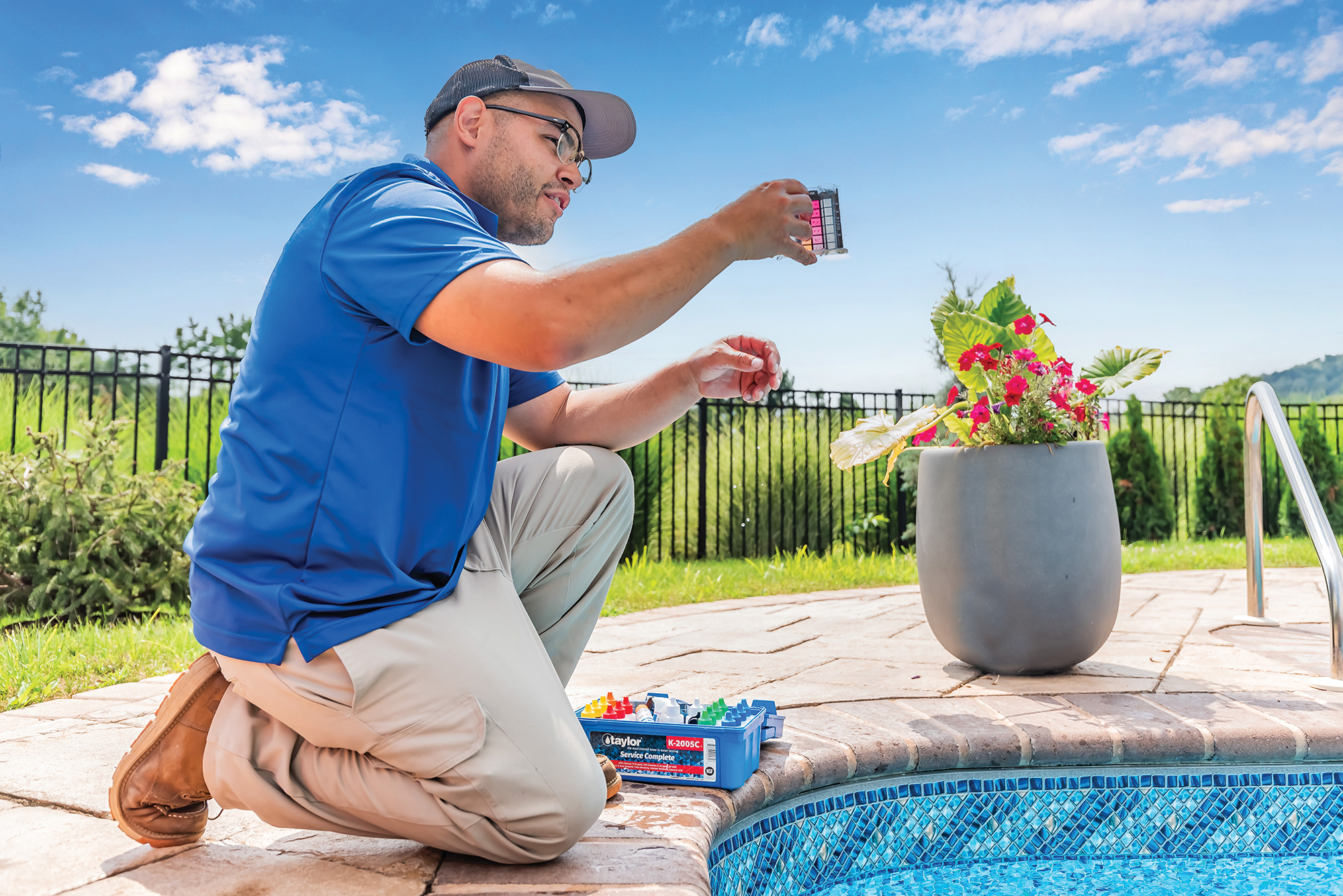When homeowners think about energy-efficient pools and spas, it’s not just about saving the planet — it’s about saving money.
“The bigger concern, especially in this economy, is cost of ownership,” says Skip Ast III, director of sales for Shasta Pools, serving the Phoenix metro area.
Thankfully, energy efficiency and cost savings go hand in hand. And achieving efficient pools isn’t just about buying the newest variable-speed pump or installing LED lights. True efficiency, say leading pool builders, starts with how the entire system is designed.
“We’ve had a huge leap in energy-efficient products,” says Jordan Clarkson, owner of Clarkson Pools in Jacksonville, Fla. “Now we need people on the ground to continue developing better functionality and better use through design. They complement each other.”
Both Clarkson and Ast are part of a new wave of builders shifting the conversation around efficiency from equipment specs to real-world performance.
Smarter Equipment Meets Smarter Plumbing
Modern pools routinely feature variable-speed pumps (VSPs), high-efficiency gas heaters, and LED lighting. But without the right plumbing and hydraulic design, even the best products can underperform.
“One manufacturer found that a lot of customers with VSPs were actually spending more,” Ast says. The culprit? Poorly designed systems. Smaller, 2-inch plumbing lines, for instance, can create significant backpressure, forcing the pump to work harder and negating energy savings.
Consider this analogy: “You’re basically putting a Ferrari engine in your car but never getting above 20 mph,” Ast explains.
Ast favors larger-diameter plumbing — typically 2.5 inches — and uses sweep 90-degree fittings instead of sharp angles to improve flow. Clarkson also standardizes advanced circulation systems, such as floor returns, to maintain consistent temperatures and chem ical distribution throughout the pool.
“That’s something that can be done today, and more people are starting to understand it,” Clarkson says. “They’re asking for it.”
Automation: From Tech-Savvy to Intuitive
Automation is another major tool in the efficiency playbook — but only when it’s accessible to homeowners.
At Shasta Pools, every new build comes with an advanced, cloud-based pool automation system that measures energy consumption. It’s brand-agnostic, communicating with every component on the equipment pad. Homeowners can view real-time and historical energy data, adjust settings, and even plug in their local utility rates to understand their true cost of ownership.
“This is what helps us put a magnifying glass on what’s real,” Ast says. “You can’t tell how much your pool is costing just by looking at your energy bill — but now you can see it.”
Clarkson also emphasizes the importance of easy-to-use controls, noting that scheduled timers for lights and pumps prevent wasteful, overnight energy use.
“Control features allow for better efficiency,” Clarkson says. “You’re less likely to leave the lights on all night when you can set it to turn off a few hours after dusk.”
Changing How Homeowners Think About Efficiency
While environmental responsibility motivates some pool buyers, Clarkson and Ast agree that cost of ownership remains the primary concern — especially as utility rates climb.
That makes it critical for pool professionals to blend efficiency with aesthetics, functionality, and education. To educate customers, Ast uses clear analogies, like comparing small plumbing lines to a congested freeway to help customers understand why hydraulic design matters.
“The key to today’s consumer is getting them that information,” Ast says. “Most families are going to digest it a long time before they ever call you.”
Thoughtful Landscaping for Sustainability
Beyond plumbing and the equipment pad, there remains another big opportunity to design more sustainably: managing water runoff, especially as lots get smaller and homes get larger.
Clarkson points out that many of his clients are turning to permeable pavers, elevated composite wood decking, and artificial turf installed over the right subbase to create surfaces that allow rainwater to filter naturally into the ground. Materials like composite or ipe wood, when elevated at least six inches above grade, function similarly to permeable pavers, reducing runoff and easing the burden on municipal stormwater systems.
Proper grading also plays a key role. Instead of allowing water to sheet off pool decks and hardscapes into neighboring yards or public drains, Clarkson’s team designs sites so that water flows gently into landscaped swales or infiltration zones, where it can be absorbed. Some driveways even incorporate underground drain fields to encourage percolation rather than runoff.
“It’s all about not adding stress to the stormwater system,” Clarkson says.
The Future: Integrated Systems, Thoughtful Design
As automation, plumbing design, and energy-efficient equipment continue to evolve, builders like Clarkson and Ast believe the next leap forward lies in integration — combining smart products with smarter system layouts from the ground up.
“Both the product and the pool need to complement each other,” Clarkson says. “If we blend form, function, and final product, the result is better overall—for the environment and for the homeowner’s wallet.”
Ast puts it even more plainly: “Efficiency isn’t just something you buy. It’s something you design.”




